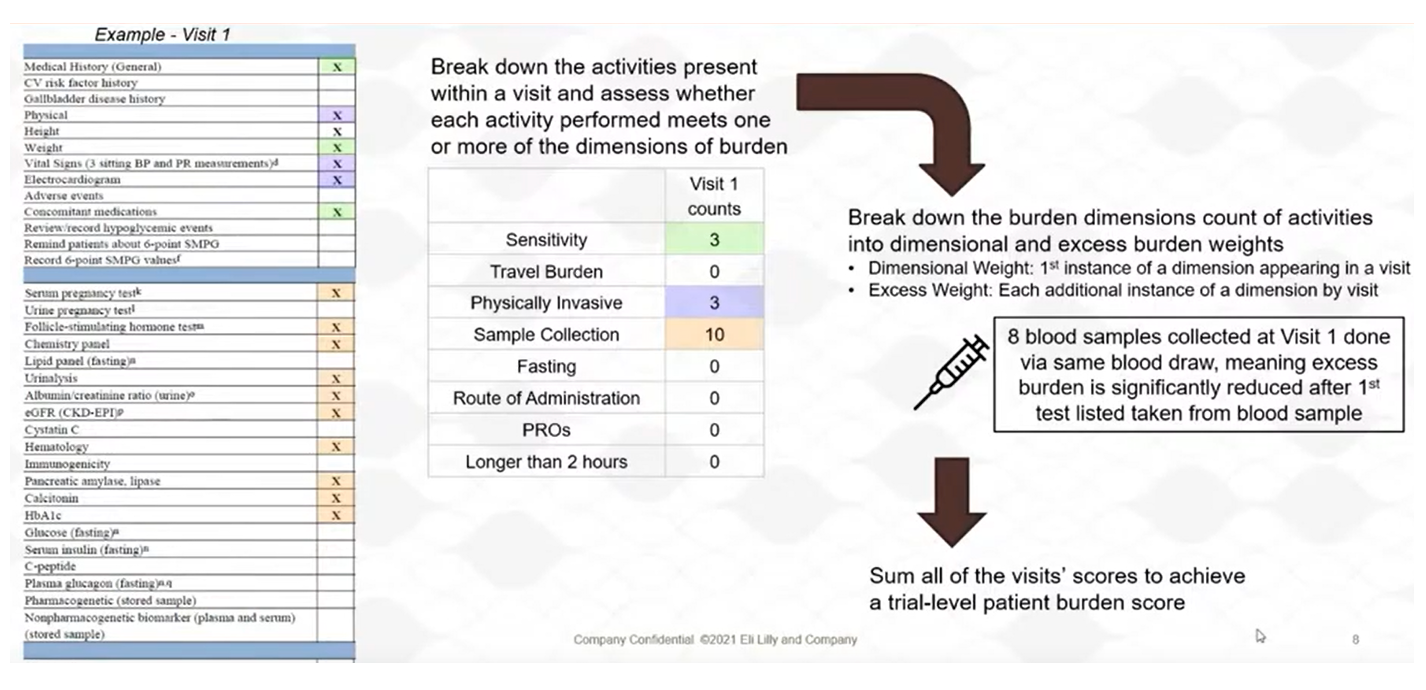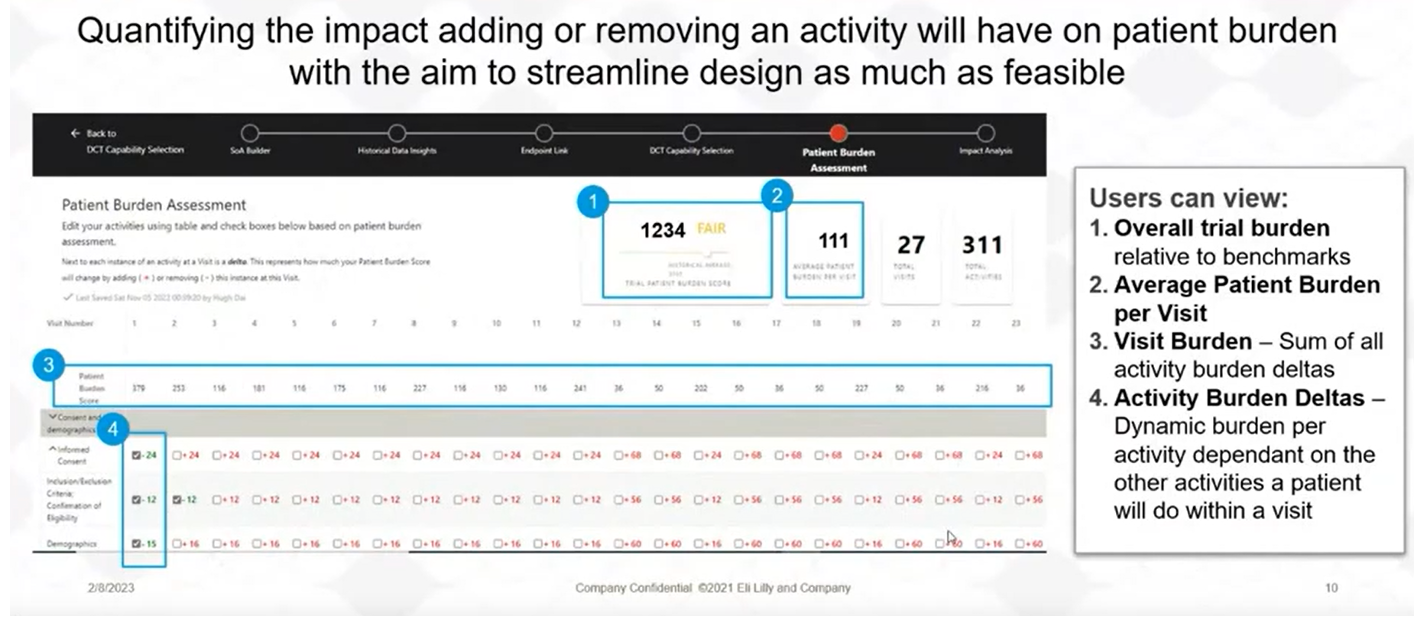Innovative Tools for Patient-Centric Clinical Trial Design: Examples and Applications from Eli Lilly
Presentation at SCOPE 2023 highlights tools such as interactive schedules and benchmarked data which can increase patient centricity.
Employing innovative tools to create patient-centric protocol designs is essential for improving patient experiences and trial efficiency. This article highlights the use of novel tools that Eli Lilly presented at SCOPE 2023 (by Hugh Dai, associate director, clinical trial design capabilities, and Jade Dennis, senior director, clinical trial design capabilities at Lilly) to prioritize patient perspectives in clinical trial design, with examples demonstrating their potential value in optimizing patient burden, engagement, and satisfaction.
Innovative tools for assessing patient burden
One of the key challenges in designing clinical trials is minimizing patient burden. To address this issue, Lilly has developed analytical protocol design tools that quantitatively measure the impact of study design on patients, enabling protocol designers to make data-driven decisions and optimize trial protocols.
Interactive visual schedules
Lilly built an interactive visual schedule that allows protocol designers to see the patient's journey throughout the study, with data points representing the changes in patient burden at each visit. Protocol designers can review the contributing factors and adjust to reduce patient burden by clicking on these data points.
This tool promotes user interactivity and facilitates comparing the proposed trial design to historical benchmarks. As a result, designers can quickly identify areas where improvements can be made and implement changes to enhance the patient experience, reduce patient burden and improve trial efficiency.
Figure 1. Lilly's quantitative patient burden methodology

Backed by benchmarking and data-driven insights
Lilly backed its analytical protocol design tools by benchmarking empirical data to enhance patient-centric trial design and facilitate data-driven insights. For example, researchers can compare their trial design to past studies with similar indications and phases by extracting and standardizing data from public and internal study documents.
This process enables protocol designers to identify patient burden trends and explore their design choices' potential impact on operational study metrics, such as recruitment and discontinuation rates. Consequently, researchers can make more informed decisions that benefit patients and improve study outcomes through this data.
Figure 2. Lilly's mock trial design studio

Lilly's protocol design tools on DCTs and their impact on patient burden
Decentralized clinical trials have the potential to significantly reduce patient burden by allowing patients to participate from home or their workplace. Innovative tools that assess the impact of DCTs on patient burden can help researchers understand how this approach can improve patient experience and retention.
Using these tools, protocol designers can evaluate the potential benefits of decentralization beyond travel reduction, such as its effect on different patient groups and the overall patient experience. This information can then refine trial protocols and further reduce patient burden.
Important considerations
In my opinion, while using innovative tools in clinical trial design offers numerous benefits, it's crucial to think hard about such approaches before jumping in head first. On the one hand, these tools can significantly improve patient experience and trial efficiency by minimizing patient burden, promoting user interactivity, and enabling data-driven decisions. They have the potential to revolutionize the way clinical trials are designed and executed, ultimately leading to better patient outcomes and streamlined processes. However, on the other hand, it is essential to recognize that the widespread adoption of these tools may present challenges, such as potential biases in benchmarking and the need for continuous refinement to ensure their accuracy and effectiveness.
Lilly touched upon the qualitative aspects (i.e., patient involvement in trial design), as they usually gather patient insights and collect qualitative data during protocol design; however, it is vital not to rely solely on quantitative methods to design protocols. First, FDA recommends incorporating the patient perspective in trial design, and second, patient needs are constantly shifting, and empirical and standardized data may not be a good predictor of changing qualitative study features requested by patients. I believe combining quantitative methods and validating the results against qualitative patient perspectives serve the best interests of patients, researchers, and regulators.
Summary
Embracing innovative tools to design patient-centric clinical trials is vital for improving patient experiences and optimizing trial efficiency. By employing cutting-edge technologies that focus on patient perspectives and burdens, researchers can create tailored trial designs that better serve the needs of their participants. These tools enhance patient satisfaction and improve clinical trials' success.
Moe Alsumidaie, MBA, MSF, is a thought leader and expert in the application of business analytics toward clinical trials, and regular contributor to Applied Clinical Trials.